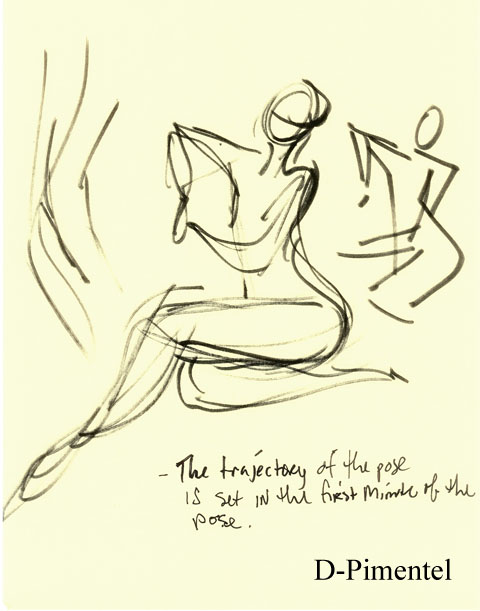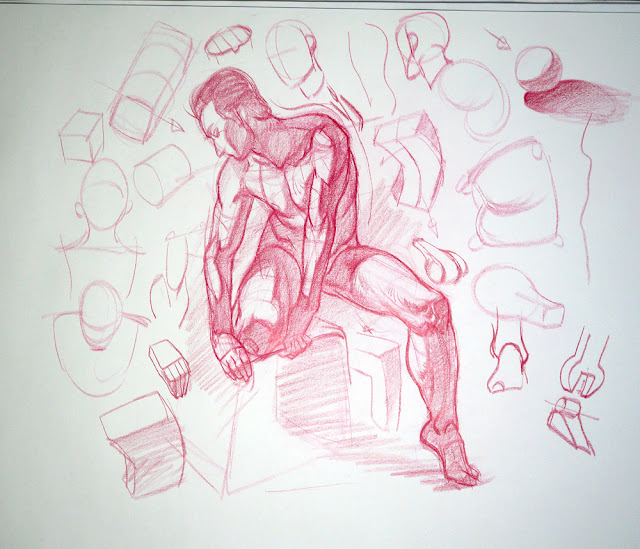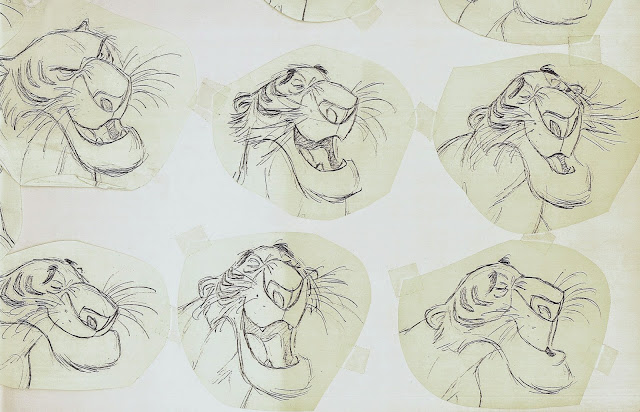Curiosity about life in all of its aspects, I think,
is still the secret of great creative people
Leo Burnett, quoted in #Girlboss
As part of my Teach Yourself series, I’ve been wanting
to do a post about advice on gesture drawing. After having
searched online for tips for a while now, I realize it is
hard to locate any blogs that focus specifically on gesture
drawing. As a result, I have decided to compile specific advice in the form of
videos and handouts as I have been able to find them. These tips all come from
different corners of the Internet, as opposed to a few specific blogs.
Defining 'gesture'
Gesture is about capturing the essence of
what you’re drawing.
It is arguably the single most important part
of making a lifelike figure. Without it, a drawing will seem stiff. When I
decided I wanted to go for CalArts, I made it a goal to really hone in on my
gesture skills.
Gesture is about feeling the action and making mental observations before you ever put the pen down to the paper. This way, you’ll communicate clearly and guide the eye of the onlooker through an appealing flow of lines.
Advice
Gesture is about feeling the action and making mental observations before you ever put the pen down to the paper. This way, you’ll communicate clearly and guide the eye of the onlooker through an appealing flow of lines.
Advice
Here is a handout by Griz and Norm on gesture drawing:
 |
| (Source: grizandnorm) |
When you’re
drawing a gesture, the essence of the pose should be captured within a minute or
so – perhaps even sooner. Instead of focusing your attention on each little
part of the body, you should focus on getting the whole figure down, without
too much detail. This way, you have everything you need, should you decide to
finish the drawing at a later point in time.
 |
| (Source: drawingsfromamexican) |
Rad Sechrist
shares some very good advice on his blog, Rad How To, about gesture:
In one of these
handouts, Sechrist points to the fact you need to ‘push’ the pose. This is
something I think a lot about, too, as I draw. It can be very easy to fall into
the trap of “straightening up” a pose
and making it more symmetrical. But when a drawing looses its angles and tilts,
it also looses its power and life. If this is something you struggle with, you
have to make a conscious effort to overcome this tendency by exaggerating the
pose.
 |
| (Source: grizandnorm) |
On a final note, I want to thank
all these artists for sharing their advice on gesture drawing!
-Christine-





























